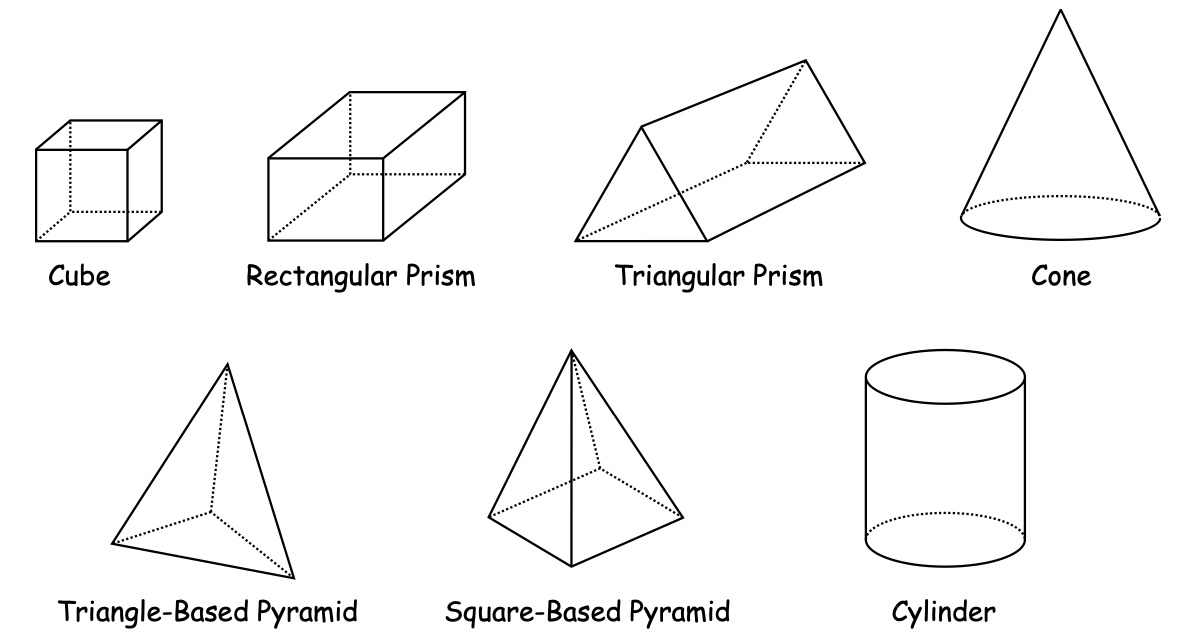Investigations
Materials:
- flashlight or lamp
- Household objects with different shaped faces (e.g., circle – can, ball, yogurt container, square/rectangle – boxes, triangle – milk or cream carton, cone made of paper)
- Select one of the household objects you have collected such as a can. Show it to your child and tell them that you are going to shine a light on the object so you can see its shadow.
- Ask your child to predict what shape (square, rectangle, circle, triangle) the shadow will be. Try it again by shining the light on a different part of the object or with a new object.
- For example, a can could have a rectangular shadow or a circular shadow depending on which face of the can you shine the light on.
Possible Questions:
How do you know what the shadow will look like?
Can an object have more than one shadow shape? Why?
2. Show your child the shadow shapes below and ask them to decide which 3D figures could have made the shadow. If they aren’t sure they could use the light to test their prediction on the objects you have collected.
Shadow Shapes

A Circle, Square, Triangle and Rectangle.
3D Figures

Adapted from nrichmaths.org
Categories: Elementary

